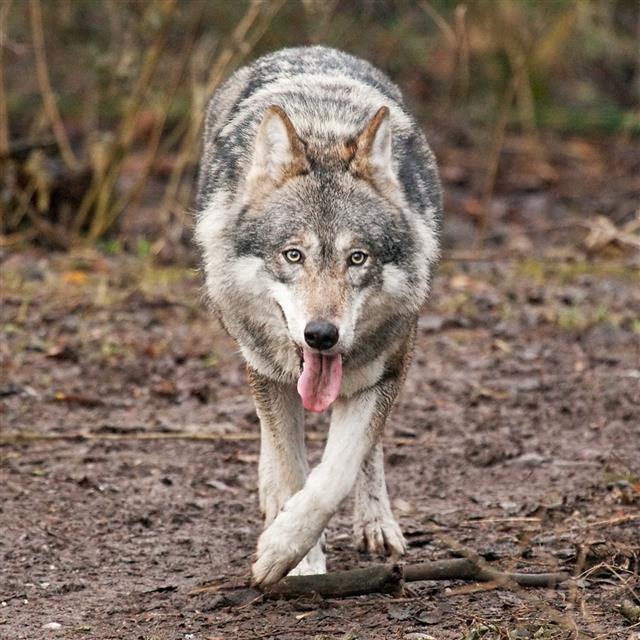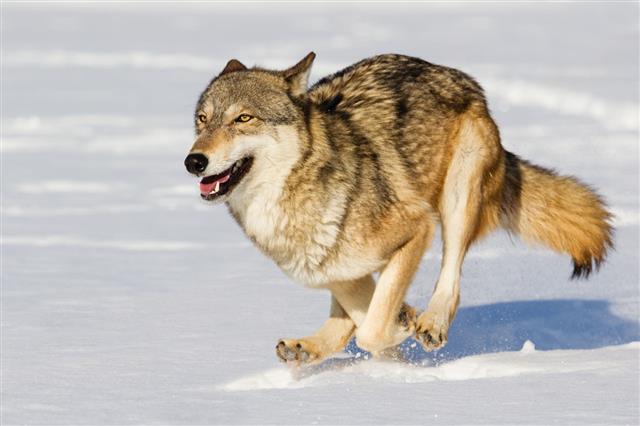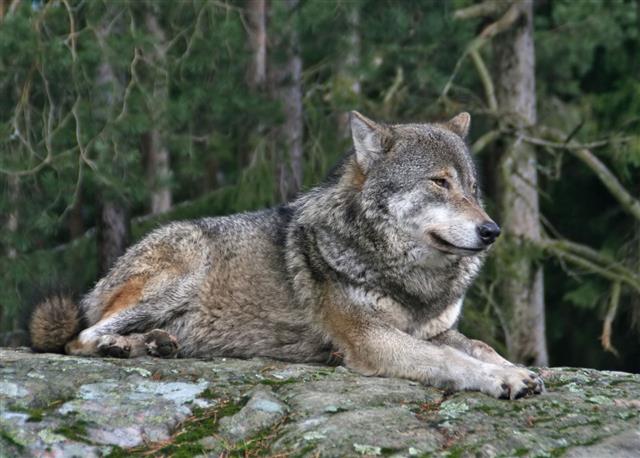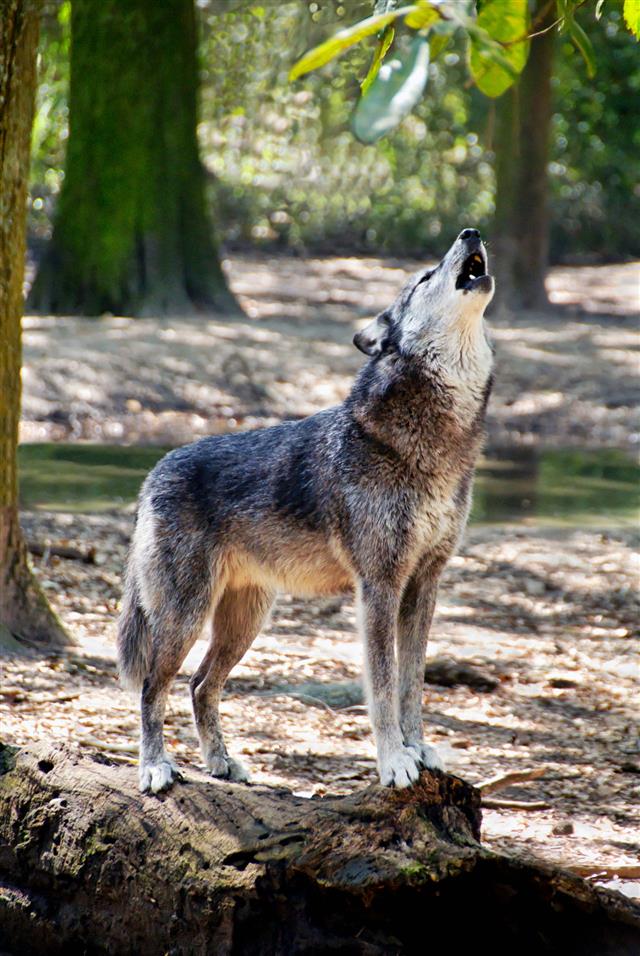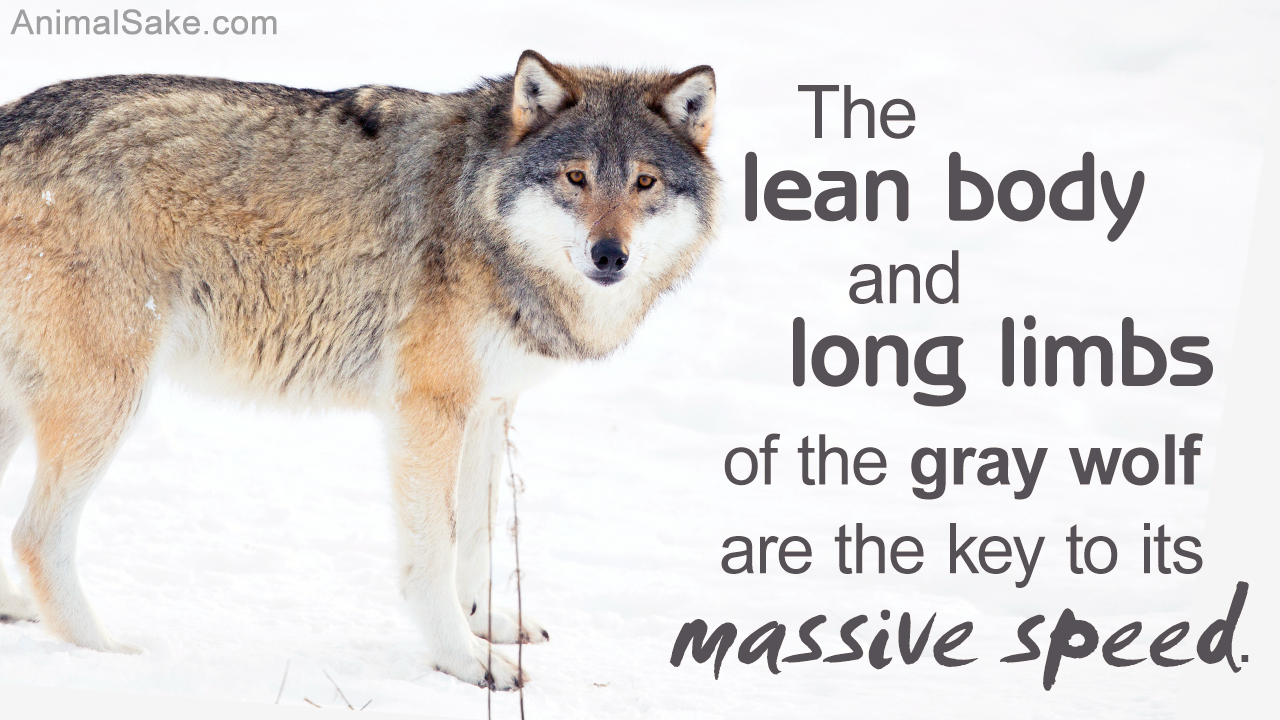
The adaptations of the gray wolf have had a crucial role to play in making this animal one of the most widely distributed mammal on the planet today. With their population in wild declining rapidly, these very adaptation skills of the gray wolves hold the key to their survival.
The geographical range of the gray wolf species spans across North America, Eurasia and northern regions of the continent of Africa; thus making it the only wild mammalian species to have such a vast geographical expanse. There exist as many as 39 sub-species of the gray wolf which are found in a range of environment – right from the extremely cold regions of Alaska (the Alaskan wolf) to the warm tropical regions of the Indian subcontinent (the Indian wolf). If the gray wolf boasts of such a vast geographical expanse today, it is because of its adaptations which help it survive in this region.
Animal Adaptations: Gray Wolf (Canis lupus)

As we mentioned earlier, the natural habitat of a gray wolf spans across the northern hemisphere of the planet; and includes several biomes of the world – right from the Arctic tundra and North American prairies to the temperate and tropical forests of Eurasia. Different sub-species of wolf are found in different regions of the world, and each of these species have adapted themselves to the conditions that exist in its native habitat. As with adaptations in other species, even those of the gray wolf are grouped into physical adaptations and behavioral adaptations – both of which are discussed below.
Physical Adaptations of Gray Wolf
The gray wolf is one of the most amazing sprinters in kingdom Animalia, and physical adaptations like the lean body and long limbs are the key to its speed. While its elongated body acts on the lines of aerodynamics, the long limbs provide it with the much-needed force to sprint – and both, in combination, help it clock an amazing speed of 40 mph when chasing its prey. At the same time, the toes of this species are specially adapted to spread wide when it is running, which provides the animal with much-needed traction on slippery surface; especially in snow-clad Arctic region. When chasing its prey, the gray wolf also uses its sharp nails to grip the ground, which – in turn, helps it change direction without having to slow down in its chase.
Moisture is an issue for gray wolf species which inhabit the snow clad regions of Alaska as well as for those which inhabit the forested regions of Asia that are typically characterized by abundant rainfall. This is where their specially adapted fur – with a layer of oily underfur, comes into picture and protects the animal from moisture, thus keeping its skin dry even in cold and wet regions. At the same time, the layer of fur – which is made up of guard hair, makes sure that ice or water doesn’t accumulate on its body. In species like the Arctic wolf (Canis lupus arctos) or the Alaskan wolf (Canis lupus pambasileus), the fur coat is relatively thicker than the other species which helps them stay warm even in freezing surroundings.
As with most of the carnivorous species, even the gray wolf has razor-sharp teeth specially adapted to pierce through the flesh of its kill. More importantly, the teeth of a wolf are specifically designed to strip pieces of flesh from the bone, which helps the species make most of its kill. With 500 lbs pressure per square inch, the jaws of this species are powerful enough the snap the neck of its prey – or to crush it bones for that matter.
Gray Wolf Behavioral Adaptations

Among the behavioral adaptations in this species, the hunting skills that they resort to are by far the best in the Canidae family. (Interestingly, the gray wolf happens to be the largest extant member of this family.) When they take on some animal which is as large as (or larger than) them, gray wolves do not resort to frontal attack, but instead attack from behind or the side. They don’t hesitate to take on animals much larger than their size – such as the bison, and that’s where the practice of hunting in packs comes handy for them. The high-pitch howl of a wolf needs no introduction – and they use this howl quite effectively to alert each other in case of lurking threats. In fact, a pack of gray wolves howl in peculiar manner such that it creates an illusion that the pack is much larger than it actually is.
Even though the gray wolf has a simple stomach, it is large enough to store as much as 20 lbs of food. This helps the animal go without food for extended periods of time, which may at times extend to a period of two weeks. When feeding on its kill, the Arctic wolf tends to eat as much as it can, and store the remaining food buried beneath the snow for future. Surplus kill is yet another behavioral animal adaptation that several animals – including the gray wolves, resort to; wherein they hunt more animals than they can actually consume immediately, and store their flesh for future use. As the temperature here is quite low, the food stays fresh for long periods, and this practice comes handy for the species when availability of food becomes a problem.
As far as sensory organs are concerned, gray wolf sub-species are far more gifted as compared to their human counterparts. Their amazing sense of smell – which is 100 times that of humans, allows them detect the presence of other animals in the surroundings with ease. Similarly, their eyes are extremely sensible to movements around them. The presence of tapetum lucidum – a reflective retina which is also seen in dogs and various other vertebrates, adds to their night vision; thus helping them hunt at night as well. All these sensory adaptations don’t just help gray wolf sub-species find food, but also help them avoid the threat of closing in on predators such as brown bears and tigers.
While those were some of the gray wolf adaptations in general, some sub-species of this animal do have a few specific adaptations of their own. For instance, the Arabian wolf (Canis lupus arabs) – native to the Arabian peninsula, has ears which are large in proportion to its body size; and that helps this species disperse body heat effectively. Similarly, those sub-species which live in the higher latitudes have a thicker fur coat as compared to those sub-species which live in the tropics, forest-dwelling wolf species are smaller in size as compared to those species which inhabit the open lands. At the end of the day, it is all about the survival; and when it comes to survival all these adaptations come as a blessing in disguise.
